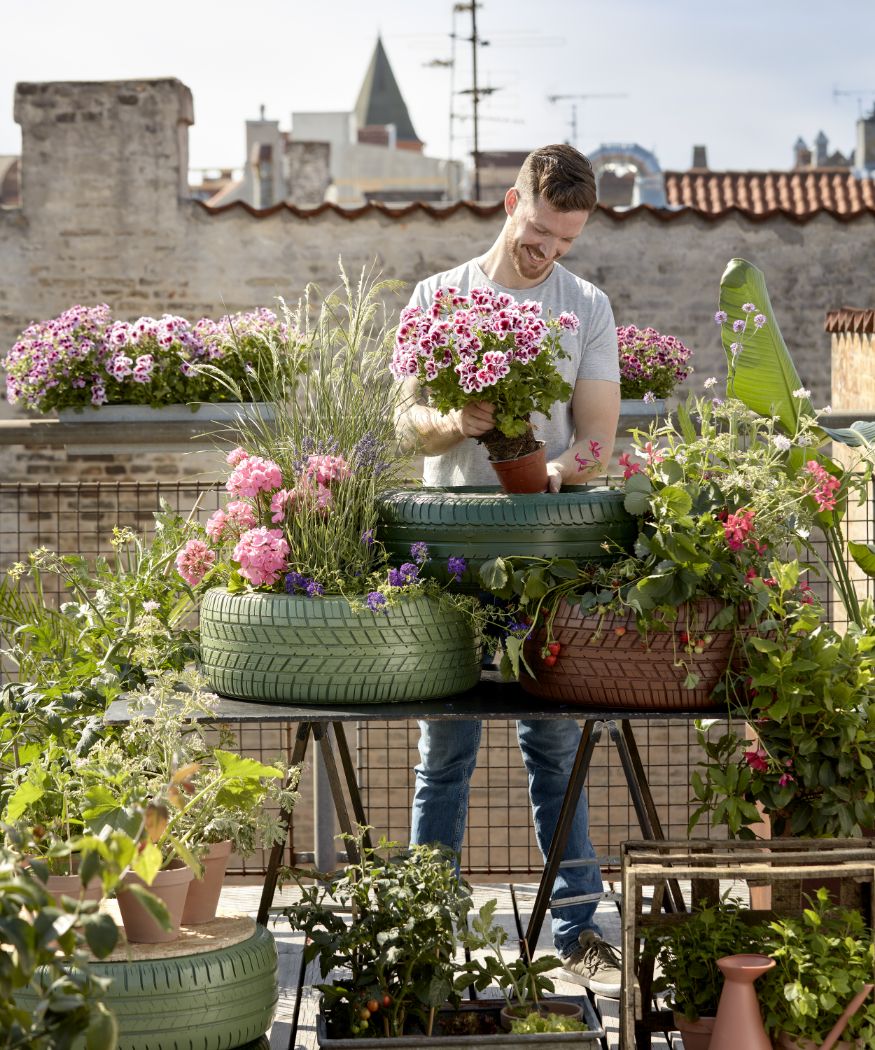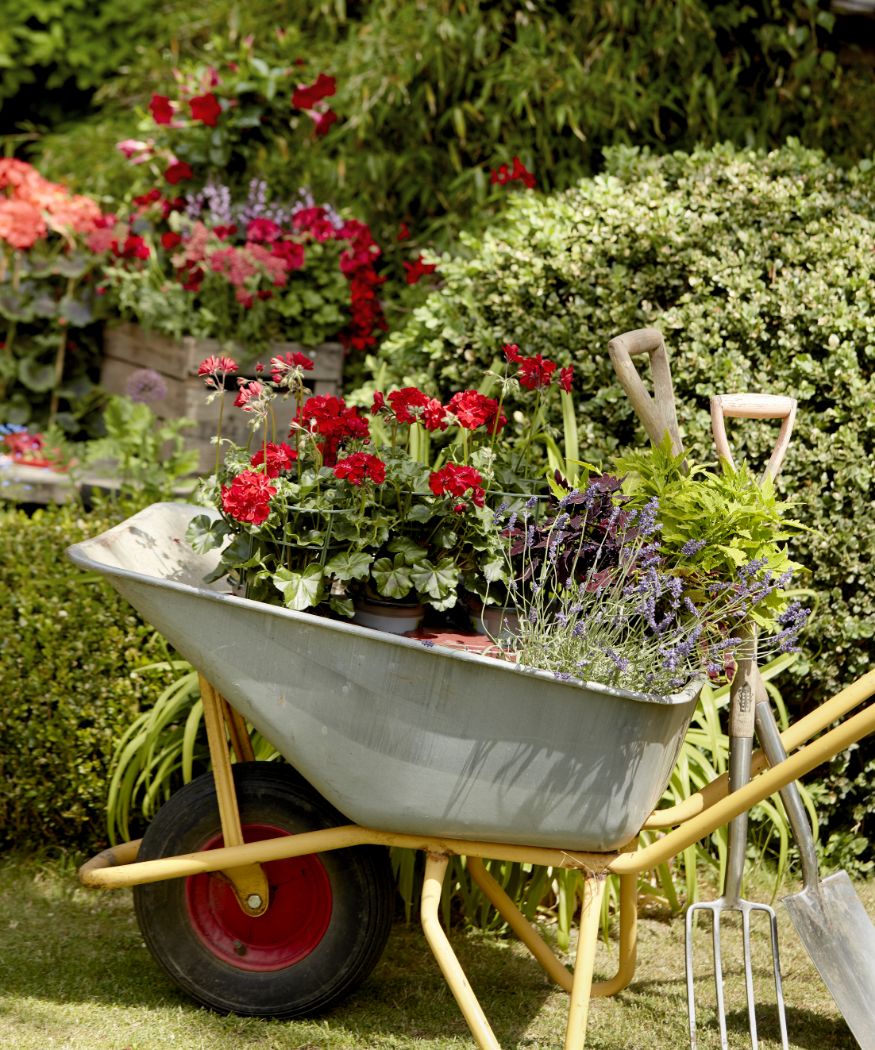Have you ever wondered if an almost indestructible plant exists that’s virtually impossible to kill? A plant that will flower profusely all season-long with little human intervention, even if you’re new to gardening? One that thrives in summer drought and shrugs off heatwaves but won’t sulk or keel over if summer showers dampen play.
Luckily, such a plant is widely available! It’s called the pelargonium and is a tried-and-tested winner for both novice and experienced gardeners alike. It is reported that millions of people have taken up gardening and growing plants for the first time during Covid-19 lockdowns and for those who are looking to develop their green fingers but lack gardening know-how and confidence, there’s no better plant than the pelargonium to transform gardens, hanging baskets, window boxes, containers and flower beds into a riot of colour with ease. Here, the experts at Pelargonium for Europe reveal everything you need to know about growing pelargoniums successfully. Simply follow these top 10 tips and you won’t go wrong!
1. Choose the right pelargonium for you

New to gardening? Zonal pelargoniums are perfect for beginners:
Garden centres and nurseries are full of these upright, bushy, colourful bedding plants every spring and summer, often sold under their common name, zonal geraniums. Ivy-leaved pelargoniums are the trailing type; the ones to choose for hanging baskets or tumbling over the edges of containers.
Regals up the stakes for showy flowers with ruffled blooms that can emerge earlier than zonal types, while Angel pelargoniums are smaller and bushier – making them a top choice for pots and containers.
You’ll find scented-leaved pelargoniums, too, which are perfect for aromatic planting displays, giving off fragrances that can range from rose to citrus.
2. Plant outdoors after frosts
It’s not uncommon for pelargoniums to burst into bloom as early as May, but proceed with caution, as they’re tender plants and must only be placed outdoors after all risk of frost is over. As with all tender bedding, it’s worth hardening plants off before planting into their final growing positions. What does hardening off mean? If you’ve ever dived into a cold swimming pool, you’ll know it’s a shock to your system, and not a pleasant one! The same goes from plants, if taken from a warm garden centre and placed outdoors where temperatures are cooler. Hardening off simply means placing plants outdoors for a week or two before planting out, during the day, and bringing them into a frost-free place at night. It helps plants to acclimatise to cooler growing conditions outdoors and avoids a sudden shock, which can set back healthy development.
3. Choose the right compost
If planting pelargoniums into containers, fill pots (make sure they have good drainage holes), hanging baskets and window boxes with a quality multipurpose compost. Pelargoniums will grow happily in garden beds and borders, too, but to really give them a head start in life and boost their flowering potential, it’s worth digging-in well-rotted garden compost or well-rotted manure a few weeks before planting, to ensure that the soil is packed with nutrients.
4. Plant out at the right size
Pelargoniums grow rapidly in spring but don’t be tempted to plant them out too early. It is important to ensure that plants are acclimatised to colder conditions before the planting in the garden. When doing so, be sure to allow around 20cm between each plant – it’ll give them room to put on growth and also allows air to flow around leaves, which is essential for avoiding outbreaks of mould during damp, warm weather.
5. Choose a sunny position
As pelargoniums are native to South Africa, it’ll come as no surprise that they’re sun-worshippers. Some will tolerate some light shade, so check the label of your chosen variety. The risk of being scorched by the midday sun isn’t an issue for pelargoniums, so grow in a location where plants can bask in summer heat.

6. Avoid a lop-sided display
It’s natural for plants to grow towards the sun, which can leave container displays looking unbalanced. This issue is easily fixed by rotating containers by 90 degrees each week. It only takes seconds to do and will keep container plants looking uniform.
7. Water plants wisely
Pelargoniums have an enviable reputation for drought-tolerance so it’s unlikely to result in harm if you forget to water for a day (it’s worth growing in self-watering planters, which have built-in water reservoirs, if you’re not at home to water regularly). However, plants should not be left to suffer in bone-dry soil or compost. Water regularly throughout summer, using rainwater collected from water butts, if possible (if not, tap water is fine).
8. Know when to water

Gardeners often make the mistake of watering during the day, when much of the water is lost due to evaporation. For best results, get the watering can or hose out first thing in the morning or just before dusk, when temperatures are cooler and moisture can be slowly absorbed by roots. Remember that pelargoniums can become dense and bushy which prevents rain water from penetrating the root zone, so it’s worth checking that compost hasn’t dried out even during wet spells of weather.
9. Feed throughout high season
Multipurpose compost commonly contains enough slow-release fertiliser to last between four to six weeks but after that period it can become depleted by hungry bedding plants. To keep pelargoniums flowering profusely, feed using a balanced liquid fertiliser around once a fortnight during the growing season. A top tip is to feed when compost or soil is moist; that way more nutrients are absorbed by roots and less goodness is lost due to run-off. Garden soil can become low in nutrients during the season, too, so remember to feed pelargoniums in garden beds and borders.
10. Keep flowers coming into autumn
Pelargoniums are renowned for their ability to bloom into autumn, until the first frosts, but a simple job that takes seconds will keep new flowers coming fast. Regular dead-heading of spent (finished) flower stems ensures that plants channel all their energy into forming more blooms, resulting in fresh flower clusters emerging to keep the show going.
 English
English Dansk
Dansk Deutsch
Deutsch English
English Español
Español Français
Français Hrvatski
Hrvatski Italiano
Italiano Magyar
Magyar Nederlands
Nederlands Norsk
Norsk Polski
Polski Română
Română Slovenský
Slovenský Slovenščina
Slovenščina Suomalainen
Suomalainen Svenska
Svenska Česky
Česky Ελληνική
Ελληνική Български
Български